Story time!
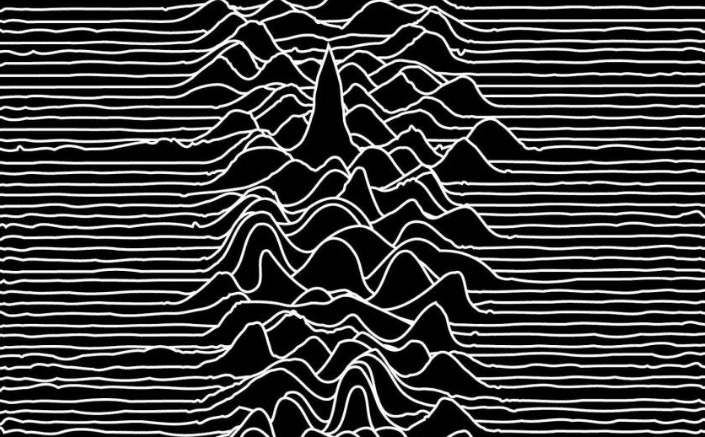
It’s well known that once punk ’77 exploded, two roads were opened: One was the “New Wave“, which affected the hedonistic vein and the insatiable taste for melody. The other was more raw, shattering and even violent, this was the “Postpunk” route. Wherever punk fell flat, postpunk picked up the pieces and reordered them into a new anti-establishment paradigm. A revision of 1950s rock ‘n’ roll and a contemptuous shift from progressive and classic rock, postpunk took the first steps to develop an industry alternative to the mainstream (which would later become the origin of indie rock). It brought a rupture in sound: in addition to placing the bass as the epicentre of the melody and freezing the guitars, it brought the cultural avant-garde to rock ‘n’ roll.
In this episode of Hit the Tone! we’re going to attempt to show you how to make your guitar icy, angular and dark through several specific models and specific tricks when using effects pedals. Now, get out of your comfort zone!
First of all, which guitar do I choose?

With these types of questions it’s fundamental to look to the masters. One of them is, without doubt, Rowland S. Howard (pictured above), member of The Birthday Party and The Bad Seeds, among others. In the majority of cases you will see that the guitarists of the most important postpunk bands carry guitars that have certain elements in common. Bearing in mind that what will almost totally define your postpunk sound are the pedals, the most advisable is to choose guitars with clean, defined and powerful sounds and which are also endowed with a certain amount of versatility to give your sound personality.
It is not by chance that the five models above are the most used in the postpunk genre. As we said, it is essential that your guitar generates a clean, defined and powerful sound. No matter how much it comes from punk, in postpunk there’s not a trace of garage rock. And if we talk about defined sound obviously we have to to talk about Fender. The Jazzmaster as well as the Jaguar, the Telecaster or the Stratocaster are perfect guitars for the sound we’re looking for.
But man cannot live off of Leo Fender’s inventions alone, therefore it is necessary offer alternatives. When you think of the Rickenbacker you immediately think of fringe haircuts, turtleneck collars and squeaky-clean melodies. However, this purity of sound is ideal for postpunk when moulded by pedals, as we pointed out earlier.
A model that immediately comes to mind is the 330 MBL, played, among others, by Daniel Kessler, guitarist for Interpol, one of the bands that led the revival of the postpunk at the beginning of this century. We’re talking about a semi-acoustic guitar (which implies more versatility) with two high gain single coil pickups. In a you’ll see why it’s important that the pickups are just like that. The Epiphone Casino is another interesting option, especially if you want to sound loud and blunt (watch out for its pair of Gibson P-90 pickups), which, with the appropriate distortion, will create dark atmospheres. We finish this review of possible guitars with a jewel used by the great Andy Gill (Gang of Four), the Reverend Double Agent W. What separates this guitar from the other two? Well, versatility, it’s a guitar that incorporates both a humbucker pickup and a P-90! Simply desirable. In short: when choosing a guitar, take into account the power, the definition of the sound and the versatility it offers you with electronics.
You are currently viewing a placeholder content from YouTube. To access the actual content, click the button below. Please note that doing so will share data with third-party providers.
Choose your pickups wisely
Well, as we’ve seen, there isn’t much to choosing a guitar to play postpunk, because there are other elements that will determine your sound more. One of them is the type of pickups.
The single coil pickups are the oldest in history and are characterised by a bright, round, warm sound. Why are you flinching? Oh, because they can cause a constant buzz when you play at high volume? We should resort to them when looking for a clean sound and smooth distortion. To understand this, listen to one of the quieter songs of The Church, for example.
To correct that buzz, humbucker pickups were invented. By connecting two single coils in a particular way, the hum disappears. As a drawback, a certain brightness also disappears, and gives the sound an overall “more powerful” aspect. Plugged into the amplifier with the same volume as the single coils, the humbuckers sound much louder. That’s why we’ll use them when we’re looking to shake the floor and ceiling, when looking to sound, for example, like My Bloody Valentine.
You are currently viewing a placeholder content from YouTube. To access the actual content, click the button below. Please note that doing so will share data with third-party providers.
Are pedals that important?
You are currently viewing a placeholder content from YouTube. To access the actual content, click the button below. Please note that doing so will share data with third-party providers.
Oh, yes, much more than you can imagine. Listen to the song “A Forest” by The Cure (above). Pay special attention to the guitar. The sound is different than what a clean guitar produces? That’s how important postpunk pedals are. We’ll start with the classic triad in any ’80s pedalboard: compressor, chorus and distortion.
The compressor is an adjustable gain amplifier, which means, for practical purposes, it levels out the peaks and valleys of gain in your sound. It is, therefore, a practically fundamental pedal, even more so in postpunk, where both punches and arpeggios on the guitar are common. The MXR Dyna Comp was used (in its darkest and less full-stage era) by The Edge. Its knobs (Output and Sensitivity) interest us in this case. If we are looking for a rather aggressive sound, we must increase the Output (which functions as a volume control), since the pedal automatically balances the tones, which we can modify with the Sensitivity. The Behringer CS-400 stands out for its value for money and for its intuitive use: it has Compression, Tone, Attack and Sustain knobs. Since its compression is quite soft, it will allow us to play with textures and, surely, we will want to combine it with a powerful chorus and distortion. Another alternative is Keeley Aria, used, for example, by Daniel Kessler. This pedal gives us the smooth distortion of an overdrive, so we don’t need to crank the drive as much (if the “FX Order” switch is set to Compressor first).
The king of the 80s: the chorus
I bet that between 1980 and 1990 no more than ten songs played on any radio station in which the guitar (or, even, the voice) did not use the chorus effect. It’s a modulation effect that copies the guitar signal and doubles it with a slight time lag and detuning. The result is a sound with more body and colour, which is essential if you are the only guitarist in your band. No? Come on, listen to this. Now this. Now this. Yes: all those guitars have chorus.
The above are two examples of affordable and really interesting chorus pedals, the Boss CE-5 and the tc electronic Corona. The knobs of chorus pedals can have several names, but they usually respond to the same functions. The Rate (or Speed or Freq.) allows us to choose the oscillation speed of the (de)tuning. This is key: depending on how you equalize it, you’l l get a smooth effect or you’ll look like the 80 person facts, a bastard son between Madonna and George Michael. With depth we can vary the amount of detune applied and, again, sound like something soft (The Cure style) or something more strident (The Fall). The Mix (or Level or Chorus or Blend) regulates the proportion between clean signal and effected signal and the Tone serves to equalize the bass and treble response of the signal with effect. As we said, it’s dangerous to go too far with the chorus. Our advice is to keep it in the middle and, if we want to sound more clairvoyant, put more overdrive or distortion.
Another listening break… This song:
You are currently viewing a placeholder content from YouTube. To access the actual content, click the button below. Please note that doing so will share data with third-party providers.
Do you like it? Well, you won’t get that guitar sound without a distortion pedal. Let’s continue!
Distortion pedals differ from overdrive pedals in that they produce a more saturated and direct sound, the signal produces less couplings and the result is something more artificial. As for their operation, the truth is that there isn’t much to say: their knobs are usually quite self-explanatory. As you can see, the three that you see above, the Suhr Riot Mini, the Proco Rat 2 and the MXR Distortion + are all quite intuitive pedals, with their volume and distortion level knobs. The Rat also incorporates a filter knob, which works differently to the Tone or Brightness knobs by always retaining at least a minimal amount of each frequency. What does this mean? The extreme levels will be as usable (not dry and useless, as in other cases) as the mid-range. Although distortion pedals are probably the most intuitive, remember that a proper combination of compressor, chorus and distortion (especially the latter two) will be determine your sound. But wait, there’s more…
More pedals?
You are currently viewing a placeholder content from YouTube. To access the actual content, click the button below. Please note that doing so will share data with third-party providers.
Aha! Remember this guitar line? Sure you do, unless you’re a pensioner or you’ve had arthritis for 15 years, you’ve even danced to it. Well, alas, my friend, we have a piece of news: you still need a pedal to get that sound. This is called reverb.
The reverb pedal allows us to provoke the sensation that we are producing a sound in a different place (with more echo, more space or less space) than where we are. Although it is not an essential pedal to play postpunk, adding it to our footswitch will considerably expand our tools when it comes to producing atmospheres. Both the EarthQuaker Devices Ghost Echo V3 and the Electro Harmonix Holy Grail or the Boss RV-6 are reverbs that should be noted. The Holy Grail is simple, with a reverb knob and 3 predefined modes (Spring / Hall / Flerb), of which the Spring option is most interesting for postpunk, recreating classic spring reverbs of the ’50s. The other two have the usual knobs, referring to reverberation time, mix and tone. When adjusting them, you have to take into account the chorus and the distortion in your effect chain, because the reverb will generate a tail end of each sound. If we don’t combine it well, we can create a real messy soup of sound. No good.
Another pedal that is not fundamental but that will help us get closer to the postpunk universe is the Delay. This effect copies the guitar signal and plays it some time later, generating an echo. As in the case of the reverb, calibrating it is vital according to what we have in mind regarding chorus and distortion: if we put a good amount of chorus and distortion, it would be advisable not to abuse the delay. The basic knobs of a delay pedal are the delay time (modifies how long it takes for the pedal to repeat the signal) and the number of repetitions or feedback, which determines how many times the previously copied wave will be repeated.
These are basically the knobs incorporated in the Boss DD-8. The other model you have in the picture, the Electro Harmonix Deluxe Memory Man TT1100 also allows you to divide the effect to specific rhythmic figures (quarter note, eighth note, dotted eighth note, triplet and sixteenth note). The equalization (EQ) of the feedback is fundamental, because if we go too far on either end of the spectrum we can destroy any intended atmosphere.
We finish this review of “postpunk pedalistics” with the flanger, an effect that is obtained by duplicating the original signal and applying a very slight delay to this second signal, with a comb filter respecting the harmonics and producing a metallic oscillating sound. Oh, still still have no idea how it sounds? Watch this:
You are currently viewing a placeholder content from YouTube. To access the actual content, click the button below. Please note that doing so will share data with third-party providers.
One of its great prophets has always been Keith Levene, PiL guitarist. Levene usually uses what is probably the most controversial flanger: the Electro Harmonix Stereo Electric Mistress. Like the Boss BF-3, it allows you to control both the interval at which the second wave is triggered and the level of effect of the second wave. The flanger, like the chorus, is a dangerous effect: used with moderation it can be very elegant (check out the first albums of The Gun Club, for example), but if it gets out of hand, we could end up with a copy of a horrible ’80s nightmare.
Anything else?
Yeah, but it’ll be quick. Let’s remember: you already have your guitar, you know which pickups are right for you and you know how to configure a pedalboard to play postpunk. Now you need to hear yourself, yes, we’re talking about an amplifier.
Although, as we pointed out before, the most important element to play postpunk with a guitar will be the guitar effects, the choice of amplifier also has its importance. It is usually recommended to limit the effects to the pedals, but when the time comes, it is advisable to choose an amp with the reverb in mind. Especially, as we said before, in the spring reverb. The two models above, the Fender Tone Master Twin Reverb and the Vox AC30 C2, as well as those below, the Marshall MG101GFX and the Blackstar ID Core 150 have among their qualities this characteristic. Depending on the reverb we have in the pedal, we will configure the amp one way or another.
And now yes, Heaven knows, you are prepared to behave like the guitarist of Idles…
You are currently viewing a placeholder content from YouTube. To access the actual content, click the button below. Please note that doing so will share data with third-party providers.
Conclusion
Well, you’ve come this far. Remember when you were a lost soul seeking guidance in the noble art of postpunk? It seems like centuries ago. At this point, the conclusion is clear: find out about the technology, think about how to set up a system to turn what’s in your head into sound and, above all, immerse your self in the postpunk universe: listen to Gang of Four, Joy Division, The Fall, Wire, Mission of Burma, Bauhaus and The Church until your ears bleed and you can’t think of anything else but wearing black. Then you’ll be well on your way.



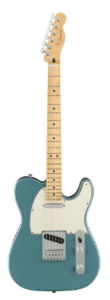



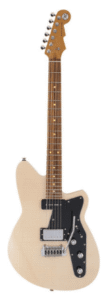









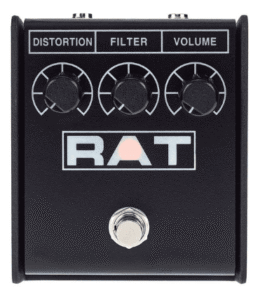






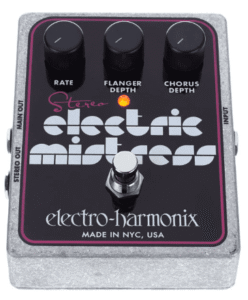











Comments 1